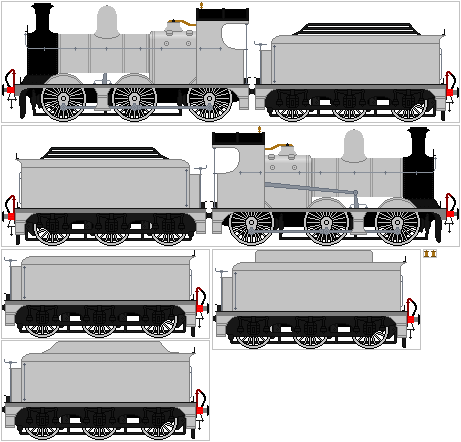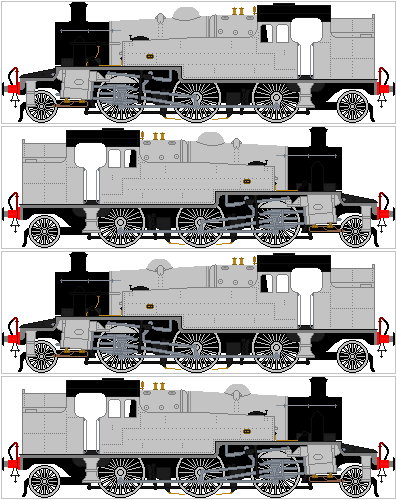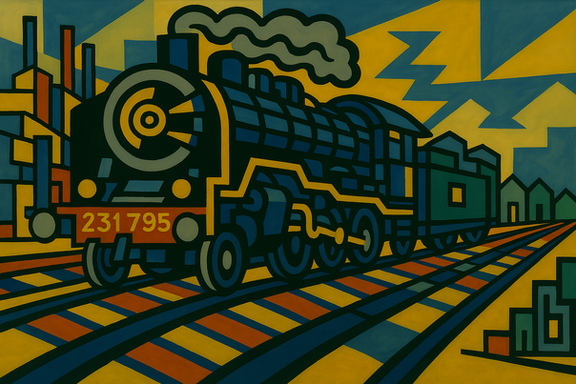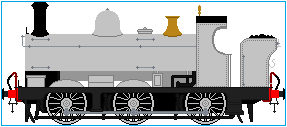HOME | DD
 tsDra90n — NER R1, Sprite Sheet
tsDra90n — NER R1, Sprite Sheet
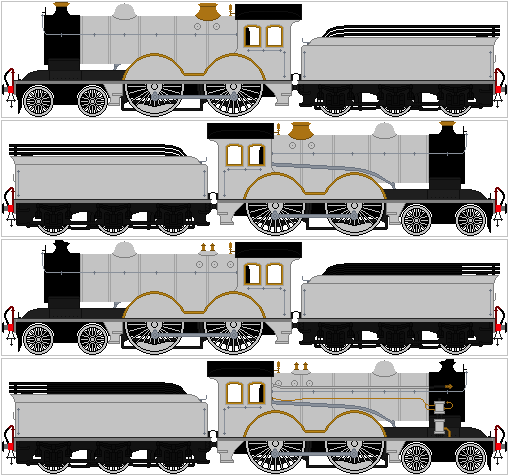
Published: 2023-12-25 21:57:15 +0000 UTC; Views: 2988; Favourites: 38; Downloads: 28
Redirect to original
Description
It happens to be Boxing Day on my side of the world so you'll be getting a sale today.This is the NER R1 Class, a larger boilered version of Worsdell's R Class of 1899, was a highly successful design that remained in service until 1957, but by 1907 they were beginning to fall behind, whilst new much larger designs were coming online, but had been put on the heaviest duties, the recent S1 4-6-0's had not been entirely successful, but neither had the recent V Class Atlantics, so a modified version of the R Class was chosen instead.
The new design known as the R1 was based on the underpinnings of the R Class, utilising the chassis of the R class with a new boiler based on the Diagram 48 boiler developed for the V. In order to use the larger boiler, the R Class boiler was extended by 2ft at the rear. The boiler pressure was also increased to 225psi, and the grate area was increased from 20 to 27sq.ft. The final locomotive had a high adhesive weight of almost 21 tons, reflecting its intended use on the heaviest expresses, rather than the high speed light trains.
When the first member of the class 1237 emerged from Darlington works in the November of 1908 it made for quite the sight with its large boiler, with the further nine members following with the last of the first and only batch being 1246 in August of 1909.
The NER had started superheating trials before the R1s were built, but it would take NER management a number of years to become convinced of the benefits. However, as soon as they were convinced, they acted quickly and all of the R1s received superheaters between 1912 and 1915.
Most of the R1s received Schmidt superheaters, but at least two of the spare boilers were fitted with Robinson superheaters instead. The working pressure had already been reduced to 180psi, and was further reduced to 160psi with the fitting of the superheaters. This followed standard NER practice, but the working pressure was increased back up to 175psi before the Grouping, at which they became D21.
The engines were very quickly cascaded down onto lower end services, the arrival of A1's in the North East saw the Raven C7's moved to the duties of the D21, and York based D21's moved to Hull, and by the end of the 1920s' the D49 had taken all other important Secondary services of their buffers, this meant they were put onto lighter and slower trains, much like the Class 50's in their days working for Network Southeast they were not designed for light stop start trains, their design being for heavy expresses and as such they clocked in high mileage.
The combination of secondary duties and a unique boiler design, meant that the D21's days would be numbered. Withdrawals began in December 1942, with No. 1239 and were completed by February 1946 with No. 1245, then LNER 2223, being the last to go.
By far the most interesting duty and one of the oddest post Withdrawal for traffic activities I've ever heard an engine undertake was that of No. 1242, when in March of 1943 the engine was handed over to the Air Ministry and traveled to the Pembroke & Fishguard Railway in South West Wales, to test new armour piercing shells.
No. 1241 returned to Darlington in July 1943 reportedly full of holes. It was put them out of its' misery January of 1944.
Credits: MaxTheModellingDude, Swiftwin4ds, BaconOverlord582, and LocoSprites, all edits by Midnight Express
Related content
Comments: 7

👍: 1 ⏩: 0

👍: 1 ⏩: 0

👍: 1 ⏩: 0

👍: 1 ⏩: 1

👍: 1 ⏩: 1

👍: 1 ⏩: 0

👍: 1 ⏩: 0

